Jack Smith’s New Roadmap to Conviction
Trump probably thought he’d scored an immunity knock-out punch against Jack Smith. Not even close.
The legal world is buzzing over Jack Smith’s latest move.
Yesterday, Judge Tanya Chutkan unsealed Special Counsel Jack Smith’s 165-page bear of a filing, entitled “Government’s Motion for Immunity Determinations.”
Before diving in, let’s recall why we’re here in the first place.
If Smith’s original indictment was a roadmap for the prosecution of Donald Trump’s January 6 crimes, then the Supreme Court’s disgraceful immunity ruling in June of this year was a Sharpie pen, blacking and crossing out key parts of that map on grounds Trump was immune from prosecution for any of his “official acts” as president.
Smith, as we have now learned, was undeterred. His immunity brief is a new roadmap. It takes us to the same destination—a guilty jury verdict against Trump—but expertly avoids the blacked out areas. Smith’s filing proclaims, “I can prove all the same crimes with a different set of evidence that your Sharpie can’t touch.”
But he goes further than that. There are some gray areas, such as what Trump and Mike Pence discussed, which Judge Chutkan could rule inbounds because it involves two candidates talking about how one wants to steal the election, not a president officially speaking to his second in command.
The new roadmap unfolds like a play, connecting separate actions and words into a coherent, gripping story. And it leads us to some interesting witnesses who weren’t highlighted before, while dropping Easter eggs around some unsolved mysteries, such as, “Who is Co-Conspirator 6?” “Who are the other unindicted co-conspirators?” And “Which witnesses are cooperating with the feds?”
Today, I want to focus on some of the new revelations and evidence in the brief, as well as the witnesses who will be testifying about it at trial, provided Smith prevails on his motion. Because of the size of the brief and the extent of the evidence, I’m only going to highlight the things that jumped out at me, while skipping past evidence we have seen before either in the indictment, the press coverage, or the January 6 Committee hearings.
Ready? Let’s unfurl Smith’s new map and take a look.
The Smith Easter eggs
Let’s first pick up some golden nuggets Smith dropped in his filing so that our story makes more sense later.
Smith’s opening salvo, naming co-conspirators and top “persons” connected to Trump’s efforts to overturn the 2020 election, sets the stage. Note that Smith makes clear he is talking about private co-conspirators and private political operatives, as well as Trump campaign staff. He does this to get around the Sharpied out areas of Trump’s “official duties.” So long as we’re talking about Trump the candidate rather than Trump the president, Smith argues this should all be fair game.
A couple more things here. Notice that the person previously identified in the indictment as “CC4” isn’t listed. That’s because it’s Jeffrey Clark, the MAGA Justice Department official who tried to get himself promoted to acting Attorney General so that the DoJ could improperly insert itself into efforts in Georgia to decertify the results of that state’s presidential election. In its immunity opinion, SCOTUS ruled that all the DoJ communications with Trump fell within the core duties of the presidency and therefore were completely off limits.
Note also that the person identified as P1 (for “Person 1”) is described as someone whom Trump worked with among the “private co-conspirators.” All of the other co-conspirators are officially unindicted ones, with that “CC” designation. So what’s up with the P1 designation, and who is it?
It didn’t take long to figure out. Smith dropped a clue that got quickly traced back to its source. He alleged that, three days before election day, P1 had described Trump’s plan to a private gathering of supporters, saying “And what Trump’s going to do is just declare victory. Right? He’s going to declare victory. That doesn’t mean he’s the winner. He’s just going to say he’s the winner.”
Long time readers of this newsletter may recognize who this is. Ding ding ding! It’s convict Steve Bannon. I wrote last year about an audio from this meeting and this stunning admission, which was unearthed by Mother Jones back in 2022, and how it was all part of the “Stop the Count” plot:
On the evening of October 31, 2020, Steve Bannon told a group of associates that President Donald Trump had a plan to declare victory on election night—even if he was losing. Trump knew that the slow counting of Democratic-leaning mail-in ballots meant the returns would show early leads for him in key states. His “strategy” was to use this fact to assert that he had won, while claiming that the inevitable shifts in vote totals toward Joe Biden must be the result of fraud, Bannon explained.
The fact that Steve Bannon is “Person 1” is rather significant. As I’ll discuss below, Bannon makes several appearances in the filing, even though he wasn’t prominently highlighted in the original indictment. Evidence around Bannon paints a damning picture of what Trump knew and what he told others about January 6 and the plan to steal the election. The big question is: Why wasn’t he named officially as an “unindicted co-conspirator” like the others? Could he be cooperating?
There’s another mystery that the Smith filing solved: For a very long time, a question mark has hung over “Co-Conspirator 6” in the original indictment. Who was this individual? The others were easy to peg based on their descriptions and actions:
CC1: Rudy Giuliani
CC2: John Eastman
CC3: Sidney Powell
CC4: Jeffrey Clark
CC5: Kenneth Chesebro
CC6: [unidentified lawyer for the Trump campaign]
The consensus among legal observers was that CC6 was Boris Epshteyn, based on some emails that seemed to match up with Smith’s allegations. Epshteyn is a lawyer, and he worked and communicated with Chesebro on the fake elector scheme. The eagle-eyed sleuths at Capitol Hunters spotted a juicy Smith clue in the new filing, one that I agree confirms the consensus around Epshteyn:
Fun fact: this filing confirms the identity of CC6: it’s Boris Epshteyn. Why? Because on Jan 2, co-conspirators 1, 2, and 6 appeared on P1’s podcast, i.e., Steve Bannon’s War Room. His title that day: “New Year, Old Fights: w/ Rudy Giuliani, Boris Epshteyn, and John Eastman”
The Pence Factor
Now that we’ve got the Easter eggs in our basket, let’s turn to some new evidence.
The most significant set of fresh evidence laid out in the new Smith roadmap concerns former Vice President Mike Pence. You likely remember that Pence was the focal point of the plot to overturn the election: If Trump could get Pence to throw out the electoral votes from the battleground states, Trump could be declared the winner of the 2020 election. Alternatively, if Pence could throw the question back to the states to decide, Trump could emerge as the victor, at least once GOP-controlled legislatures voted to decertify their states’ elections for Biden and certify them instead for Trump.
That all sounds insane, but it is precisely what Trump and his co-conspirators had set out to do. The new filing lays out evidence that Smith wants to introduce at trial from Pence, taken from both his testimony and his extensive handwritten notes. The challenge, of course, is how to convince the courts that these conversations between Trump and Pence were as “running mates,” and not for official White House business. That could provide an exception to the new rule that official duties of the president are not only off-limits for prosecution but cannot even come into trial as evidence.
How the courts come down on this will matter a great deal at trial. A lot of what Trump and Pence discussed goes straight to the question of whether Trump knew he had lost the election but was trying to crime his way out of it.
For example, in a November 7, 2020 conversation Pence told Trump he should focus on how he revived the GOP, given that his own campaign staff told him the prospects of his reelection looked bleak.
The two men had lunch on November 12, 2020, where Pence tried to find a middle ground, saying he didn’t have to concede but could “recognize” that the “process is over.”
And on a private call on November 23, Trump told Pence that one of his private attorneys was skeptical about the chances of their election challenges.
Pence even tried to get him to think about running again in 2024, but Trump was uncertain, saying “2024 is so far off.”
Here’s a bulleted list of Pence doozies from the filing.
Then there’s considerable damning evidence, much of what we’ve heard before, around what Trump tried to get Pence to do as January 6 neared. The pressure grew so intense that, following Pence’s meetings with Trump, one member of Pence’s staff was so concerned for Pence’s safety that he warned the Secret Service that Trump had threatened to go public with criticism of Pence if he failed to go along with the scheme to overturn the election.
Indeed, Trump made good on that threat on January 6, calling out Pence by name and then inciting the rioters to go after him inside the halls of Congress.
Smith understands that Pence taking the stand and testifying against Trump would be a bombshell and could seal the deal with the jury. Trump’s legal team will do everything they can to argue that all communications by Pence should be off-limits. This is almost certainly eventually going back before the Supreme Court. It will arrive, however, with key factual findings by Judge Chutkan, possibly including a ruling that the conversations were simply between two candidates discussing how to win the election.
After all, neither the President nor the Vice President has any executive role to play in the counting of ballots on January 6. To the extent Pence was there, he was acting as the president of the Senate only, in a ceremonial role.
Smith can likely still make his case without Pence’s testimony. But having it would be a very big deal, and Smith is prepared to fight for it to come in.
The Bannon evidence
There are four discussions in the new roadmap that caught my attention regarding P1, aka Steve Bannon. They demonstrate on a more granular level that Bannon was significantly involved in the alleged criminal conspiracies, something we assumed but which has never been spelled out in a filing like this.
First, there was a meeting in which the “team” of conspirators failed to convince Mike Pence to violate his constitutional duties as Vice President. Following that meeting, Epshteyn relayed to Bannon that Mike Pence’s lawyer, Greg Jacob, was “totally against us.” Bannon responded, “Fuck his lawyer.” In other words, “Keep the pressure on Pence no matter what his attorney says.”
Colorful language aside, this also demonstrates that Bannon was very much in on the plotting around getting Pence to capitulate. And someone—either Epshteyn or Bannon—provided this background information to the authorities. Was it Bannon?
Second, Bannon used his “War Room” podcast to disseminate misinformation to masses of MAGA loyalists. On December 13, 2020, for example, Chesebro sent Giuliani a memo laying out a scheme where Pence would use fake slates of electors as a pretext to claim there were dueling slates of electors—and therefore he couldn’t certify the election. Trump began daily contact with Bannon at that same time. The following day, on December 14, 2020, Bannon spread lies about the fake electors, including the notion that they were just a “contingency” in case Trump won his cases legally in the courts.
Third, Bannon was using his podcast to put public pressure on Pence, even while he joined the others in privately pressuring him. As I discussed earlier, Bannon invited three co-conspirators—Giuliani, Eastman and Epshteyn—onto his show. He asked whether January 6 would be a “climactic battle,” and Eastman responded that “a lot depends on the courage and the spine of the individuals involved.” Meaning Pence.
Fourth, the evidence suggests Bannon knew precisely what Trump was up to come January 6. We’ve long known that the day before the Capitol attack, on January 5, 2021, Bannon went on his podcast and signaled that “all Hell is going to break loose tomorrow.” That’s bad enough, but what we didn’t know until Smith’s motion is that Trump had just spoken to Bannon by phone that morning. The podcast statement about all Hell breaking loose occurred less than two hours later.
The importance of Eric Herschmann
There’s an individual identified as P9 in the filing whom everyone who has been following the story recognizes. It’s attorney Eric Herschmann, who provided some of the most unvarnished and critical testimony against Trump during the January 6 Committee hearings in 2022. He has a place of prominence on Smith’s new roadmap.
Herschmann’s importance has risen because, unlike other attorneys such as Pat Cipollone, Herschmann was never a White House official. He was brought in as private counsel to the campaign and to Trump. And as legal analyst Marcy Wheeler notes, Herschmann was also important because he was the one constantly ensuring Trump and his people abided by the Hatch Act, which forbids the use of federal property for campaigns and government officials from campaigning.
And if you think about it, that’s a good measuring stick to determine whether we are in official versus non-official territory. After all, if the Trump camp went out of its way to make sure it was complying with the Hatch Act, it’s hard to argue that something was official rather than campaign business.
Importantly, Herschmann also became a “conduit from the Campaign to the defendant” Trump. And what Herschmann had to say was often not what Trump wanted to hear.
For example, Herschmann called bullshit on Rudy Giuliani’s false claim that the number of mail-in ballots returned by voters in Pennsylvania somehow exceeded the number that had been sent out. And he told Trump that assessment directly.
And here’s a telling footnote, in which Herschmann tells Trump in honesty that Giuliani could not mount successful legal challenges to the election. Trump told him that, with respect to proving his fraud allegations in court, “The details don’t matter.”
That’s a great line for a jury to hear.
Herschmann even exchanged text messages with former Trump Chief of Staff Mark Meadows. In one exchange, they confirmed that a campaign attorney had verified that Giuliani’s claim of more than 10,000 dead voters was false. The real number? Around 12.
Not exactly election outcome determinative.
In the room where it happened
During the January 6 Committee hearings, there was rapt attention upon Cassidy Hutchinson, the top aide to Mark Meadows, who was witness to much of what was going on with both her boss and the ex-president.
There is another aide who has received relatively little attention to date, but the light is now shining squarely upon him. His name is Nick Luna, and he makes two critical appearances in the new map as P15.
Luna was Trump’s assistant and Director of Oval Office Operations toward the end of the Trump Administration. Trump probably thought of him as his errand boy, but he was present for some important and candid Trumpy moments.
Smith alleges that Luna, while on board Marine One, overheard an unprompted comment that Trump made to his family, including Melania, Ivanka and Jared Kushner. Trump said to them, “It doesn’t matter if you won or lost the election. You still have to fight like hell.”
That’s a line to take to the jury, too. Trump was fighting like hell to stay in power, even if he had lost the election.
Then there was a bombshell new piece of evidence, all the way on Page 142 of the brief, involving P15, Nick Luna:
Upon receiving a phone call alerting him that Pence had been taken to a secure location, [PERSON 15] rushed to the dining room to inform [Trump] in hopes that the defendant would take action to ensure Pence’s safety. Instead, after [P15] delivered the news, the defendant looked at him and said only, “So what?"
This goes straight to Trump’s state of mind that fateful day. It corroborates other evidence we’ve heard that Trump was fine with the idea of Mike Pence being hanged by the mob. The only thing that mattered to Trump was staying in power. Even his own Vice President’s safety was of no concern to him.
“Make them riot! Do it!!!”
As a final example of new evidence making the rounds, Jack Smith has expanded upon allegations surrounding efforts by the Trump campaign to incite violent mobs in the wake of the election results.
Smith alleged that Trump’s private operatives sought to sow chaos at polling places where votes were being tabulated. Smith gave the example of an individual designated as P5, whom Smith describes as a Campaign employee, agent and co-conspirator of Trump. This person tried to “sow confusion when the ongoing vote count at the TCF Center in Detroit, Michigan looked unfavorable for the defendant.” P5 actually told someone on the ground, when it seemed like there was about to be physical unrest similar to the 2000 Brooks Brothers Riot during the Florida ballot count, “Make them riot” and “Do it!!!”
If this sounds familiar, it’s because I wrote about this incident back in December:
Prosecutors in the D.C. case filed what’s called a “404(b) notice.” That refers to evidence not necessarily mentioned in the charges, or even part of the conspiracies themselves but that nevertheless shows Trump’s motive or propensity to commit crimes.
There were a lot of new twists and facts in that filing, but I want to focus on one big one that jumps out: Smith has evidence that a Trump Campaign employee tried to start a riot at the TCF Center in Detroit on election night, while workers were counting ballots.
Remember the ugly scenes on Election Night 2020 in Detroit, with MAGA Trump supporters banging on the walls and hurling false accusations of fraud? It really looked like things were about to explode into violence. We now know from stellar reporting who helped organize and send throngs of protestors to disrupt the counting at the TCF Center.
But until yesterday, we didn’t know this: A Trump Campaign employee had exchanged text messages with an attorney on the ground there, actually encouraging the protestors to riot and obstruct the count when it became clear as the night wore on that the vote was trending toward Biden.
I concluded that the perpetrator was none other than Mike Roman, a long time GOP operative once connected to the Koch Network who was also involved in trying to get the fake elector certificates into the hands of the right people in Washington.
The use of the term “agent” to describe Roman, both in the 404(b) notice and in the immunity motion, is notable. Legal analyst Joyce Vance noted this, too, at the time, and I explained our thinking as follows:
[A]gents generally do things at the request of their principals, meaning their actions are legally binding upon them. If the Trump Campaign Official really was Trump’s agent, and he really was urging a riot to disrupt and obstruct the election count in Detroit, then that’s legally the same as Trump himself doing it.
Roman was indicted in Georgia as part of the state’s RICO criminal case against the co-conspirators who had sought to overturn that state’s election. RICO laws are designed in such a way as to make the guy at the top liable for anything the entire criminal enterprise does, even if he didn’t participate himself.
Where things stand
I’ll have a lot more to say about the case as things progress and we see the opposition brief from the Trump legal team. Their job is to keep out as much of this damaging evidence as possible, and they will concentrate their efforts on things Trump said to other officials, like Pence.
For now, it’s enough to understand that the new map laid out by Smith very much takes us to the same destination: a guilty jury verdict. It just goes a different route and stops at different places to highlight different witnesses along the way.
After reading it, it’s small wonder that Trump has been melting down about the new evidence presented ever since it was filed. He probably never figured his conversations with his lawyers, his family and his Vice President would make it into the public record, and he probably was overconfident that his immunity win meant the case was dead in the water.
On the contrary, it is very much alive. Trump’s legal peril remains high, especially should he fail to win reelection. And Jack Smith knows just how to get us to a conviction, even with SCOTUS armed with an immunity Sharpie.

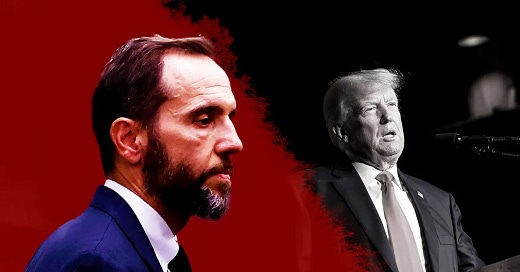



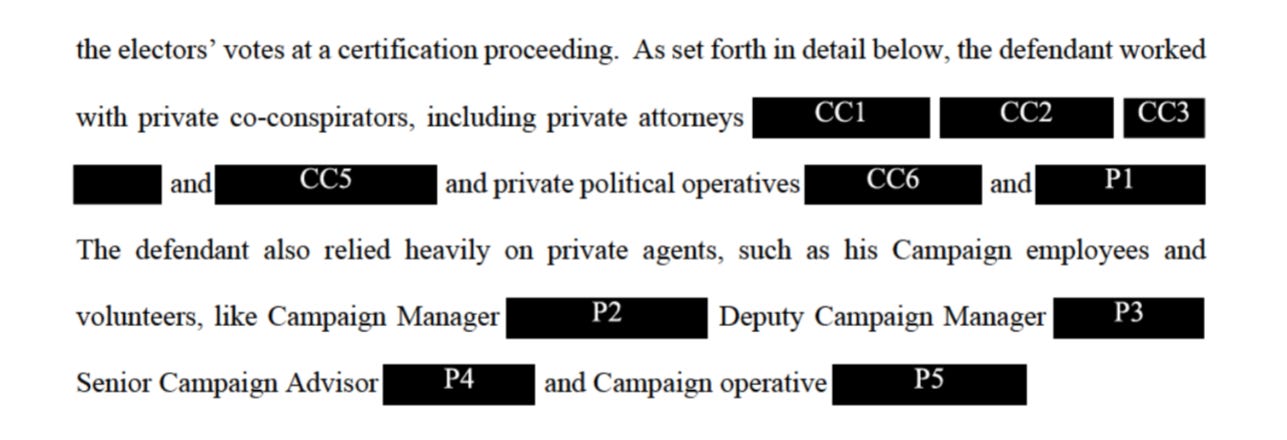
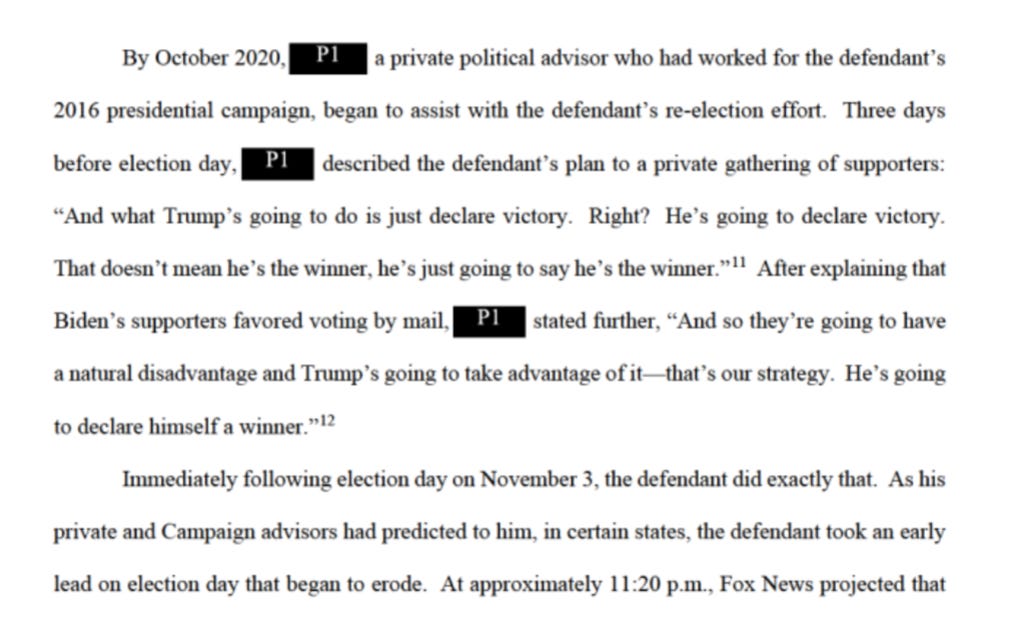
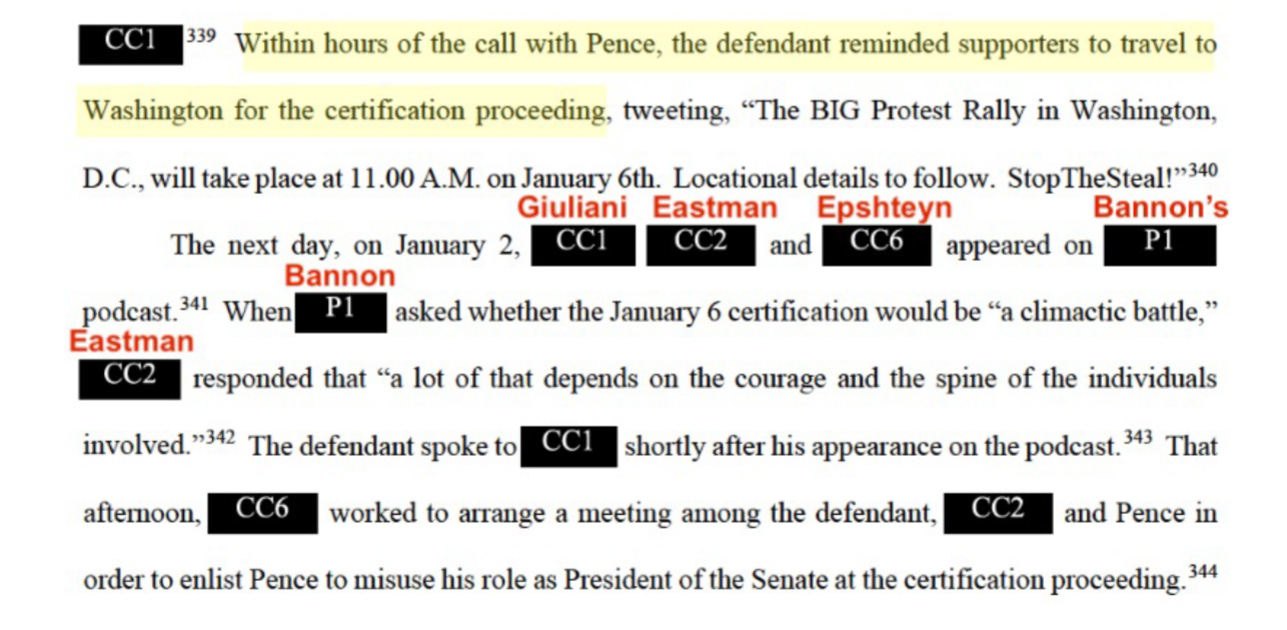
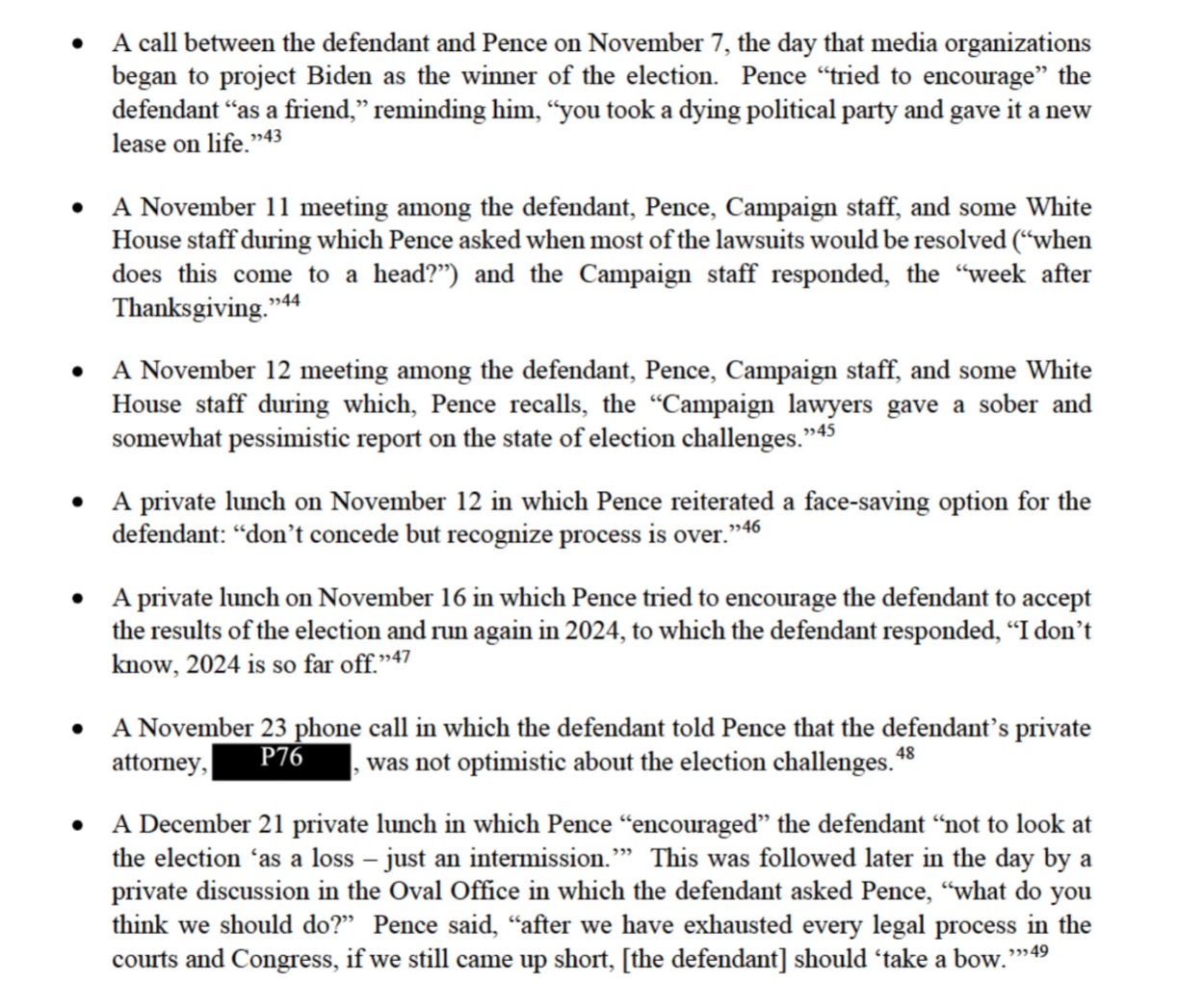
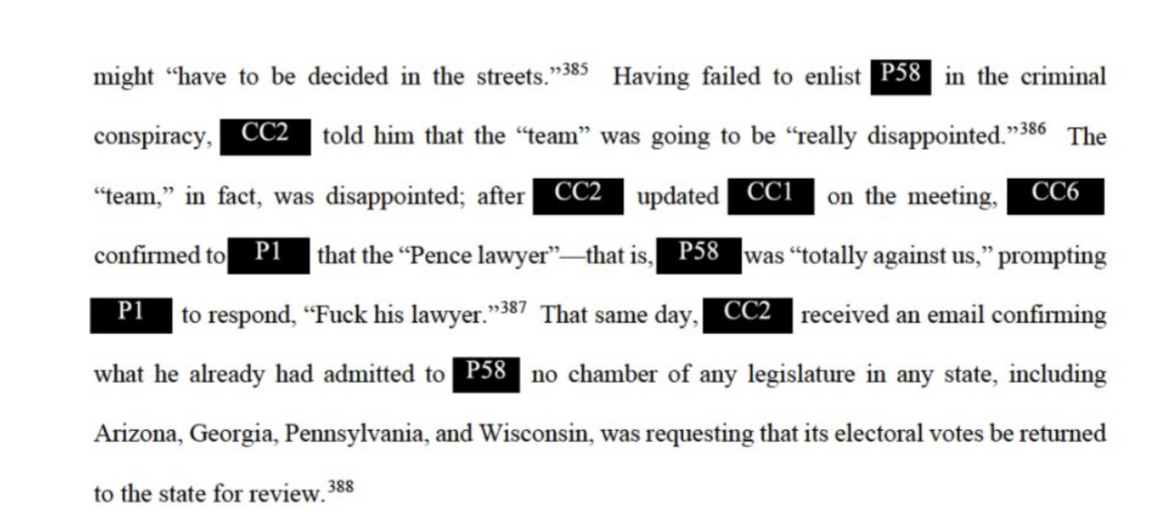

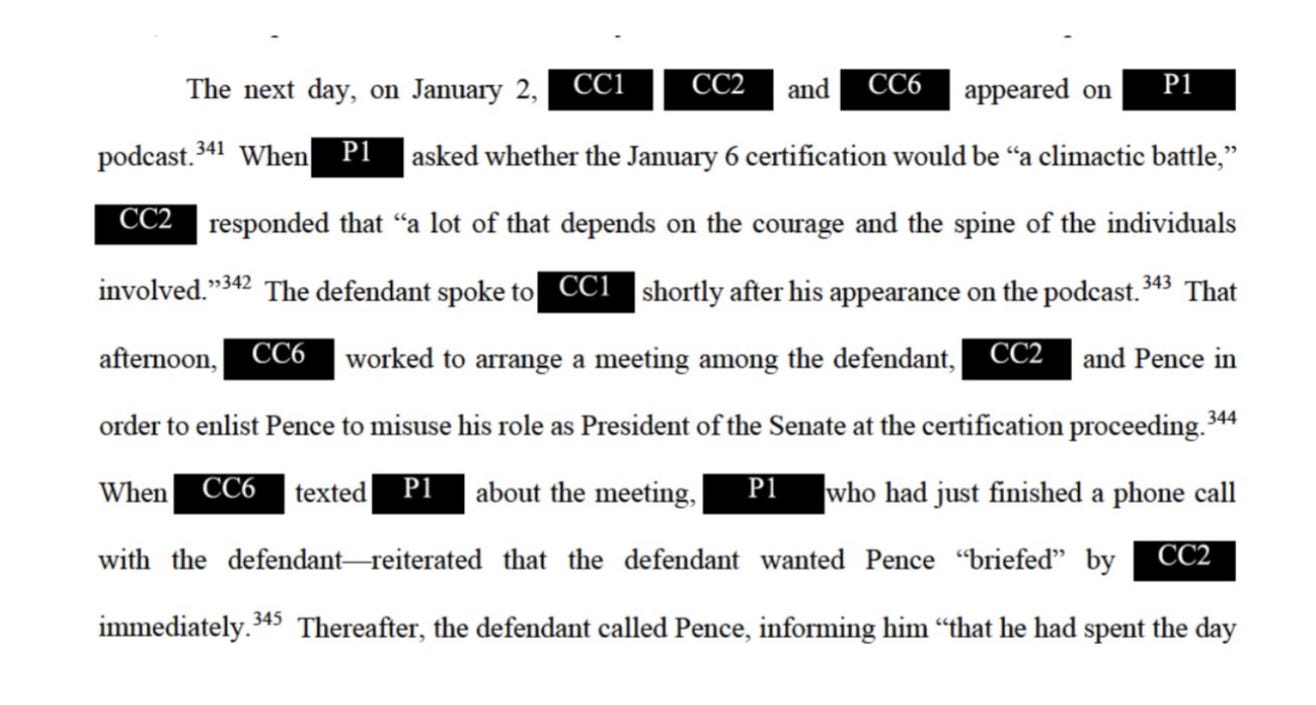


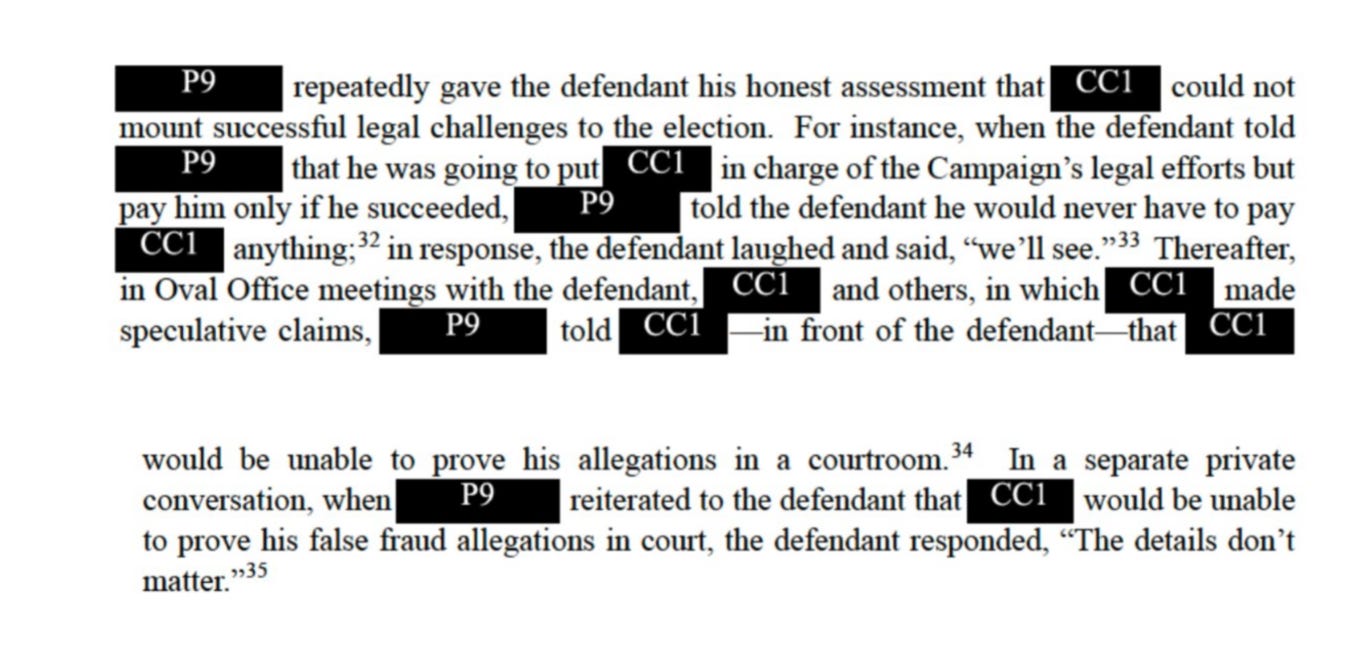

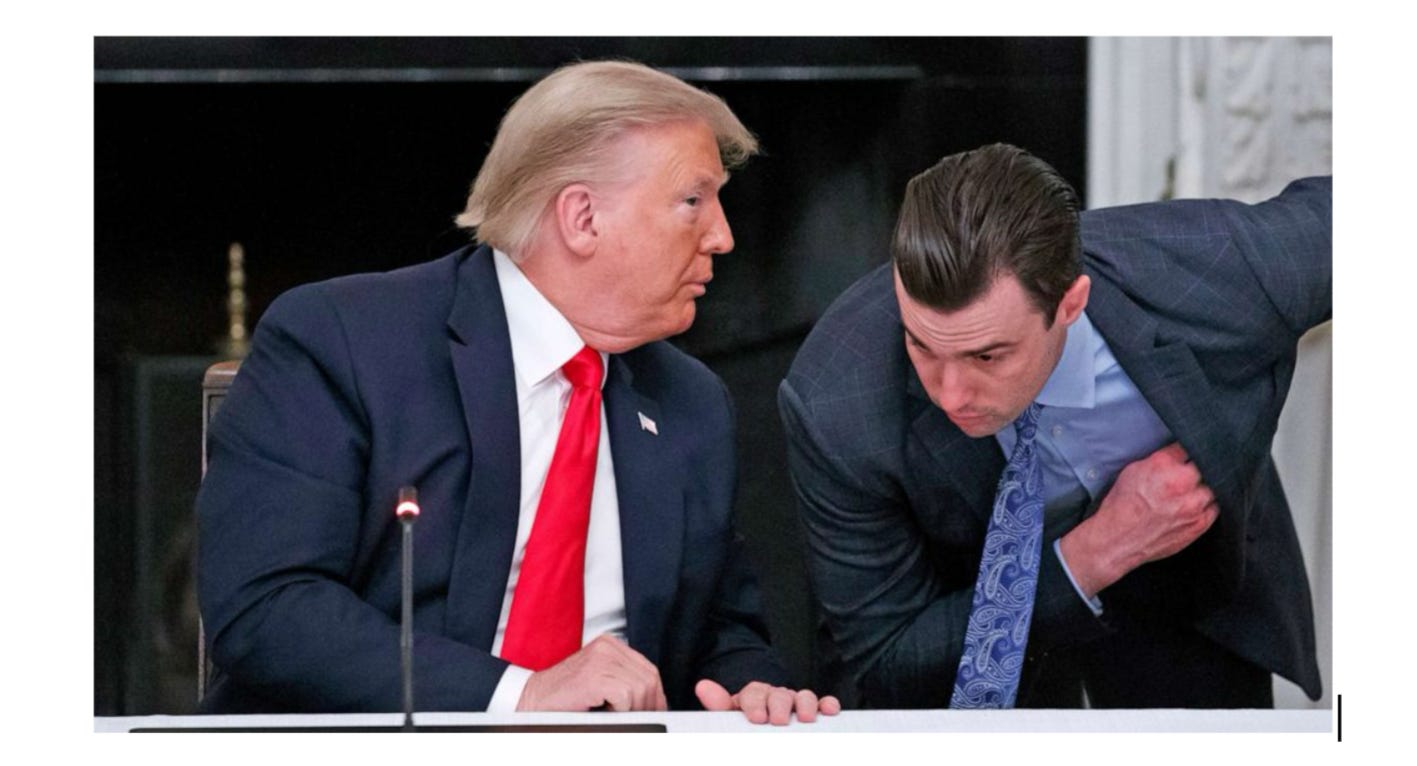
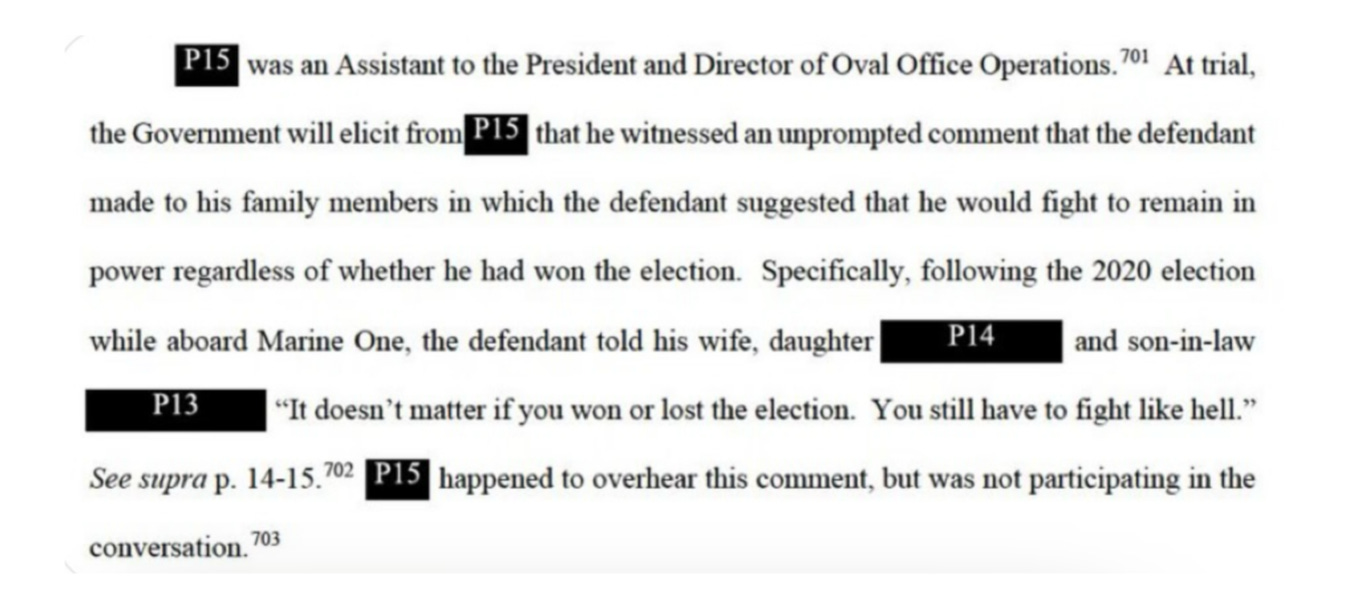
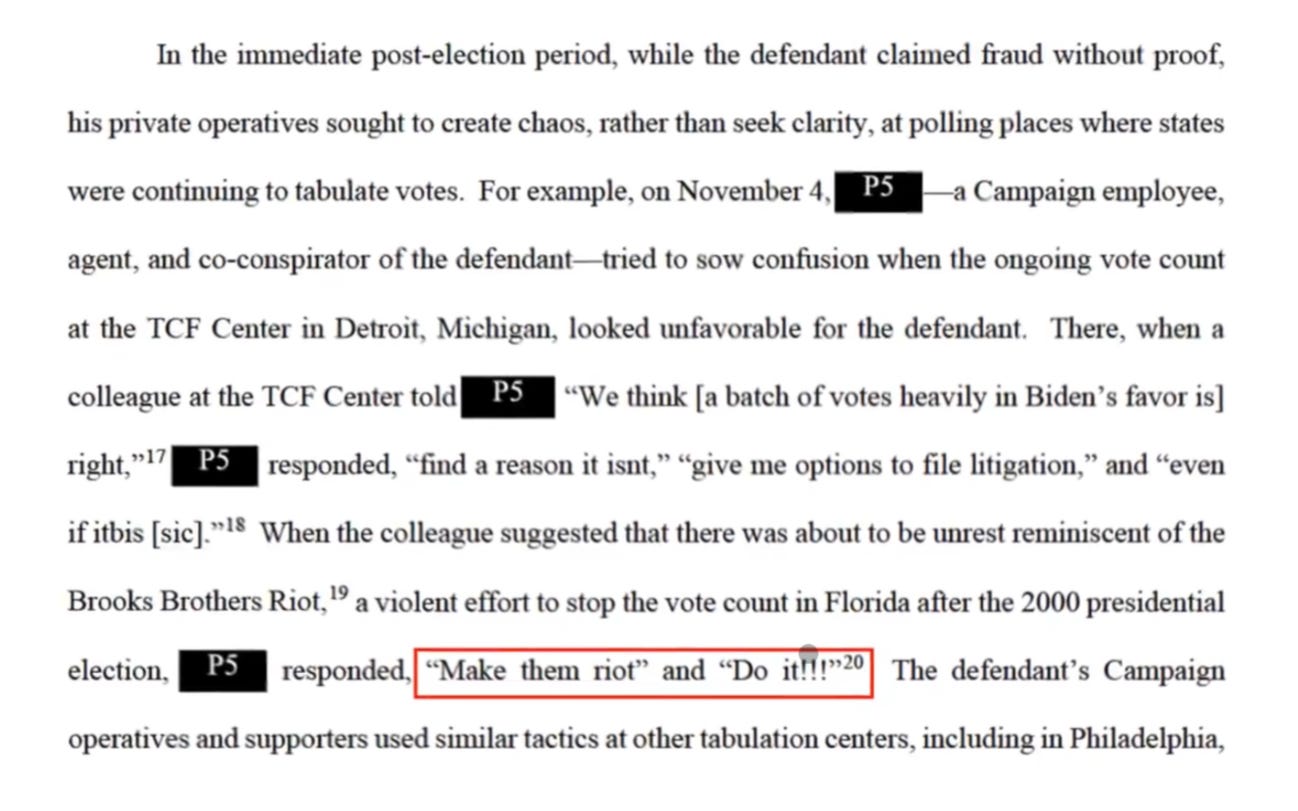
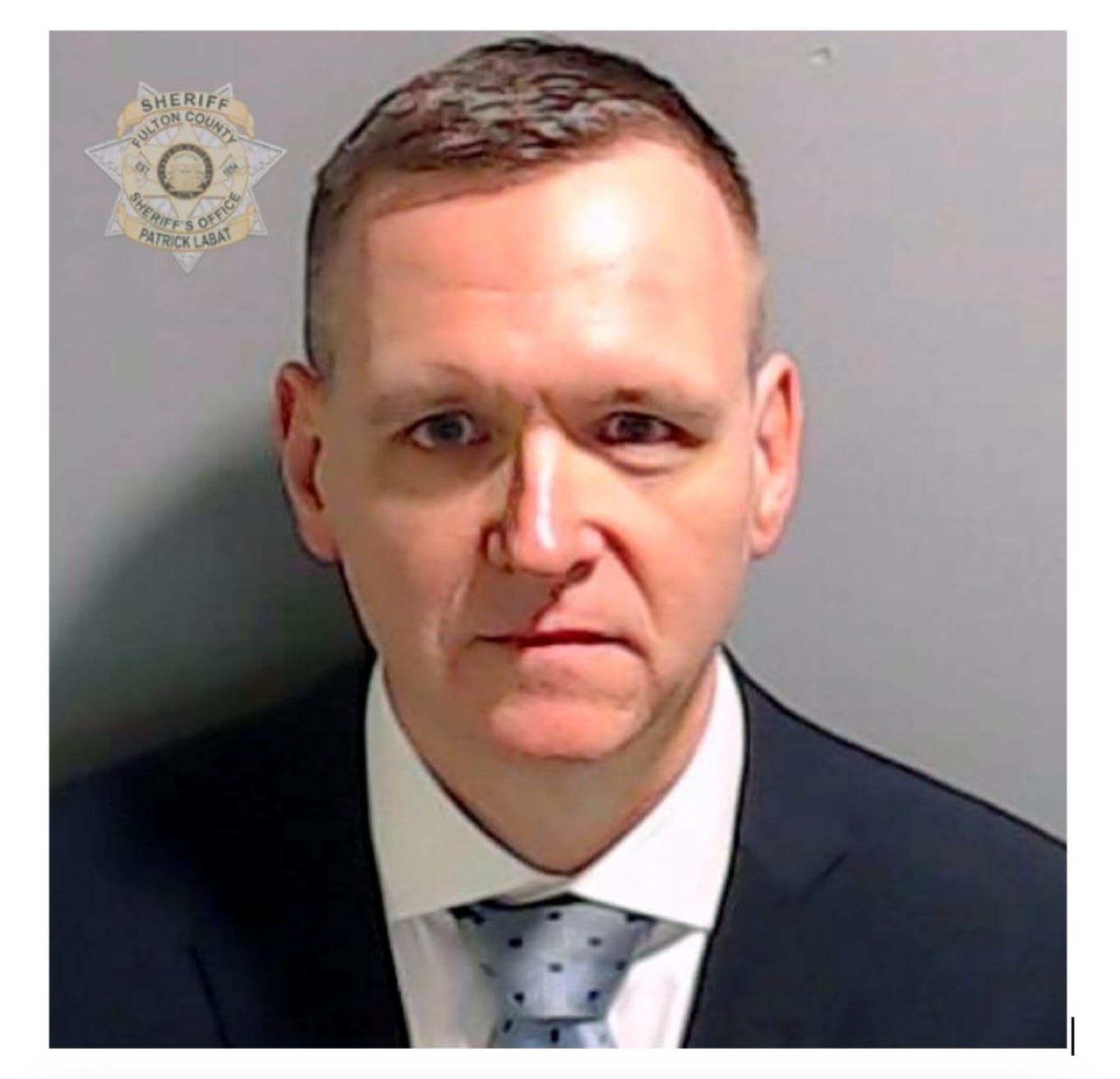
Best post of the year, thanks, Jay.
Nice to see the slithery Steve Bannon finally named in a bigly way.
The Supreme Court has work to do! Time to update that immunity ruling. Back to work, corruption kings!
This is such a valuable post Jay! Your explanations help us all to understand. Justice must prevail and these fascists need to be imprisoned! Go Jack Smith!